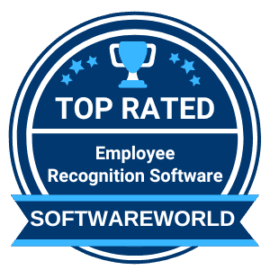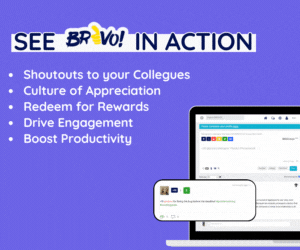
For many organizations, developing an employee experience strategy is a challenging task. It requires a significant shift in mindset, as well as adjustments in how employers attract, engage, grow, and keep their employees.
This blog post discusses the processes for developing and sustaining an effective employee experience plan. Along with that, we discuss some of the most significant issues that companies face while implementing an EX (Employee Experience) strategy.
Employee Experience Strategy: What is it?

Employee experience is the sum of all events and stages of an employee’s journey within a company. It begins when employees apply for an available post and ends when they leave.
Employee experience strategy is assessing each stage of an employee’s trip and identifying key moments, events, and interactions that occur during their employment journey. These moments must then be developed to meet employees’ views, preferences, requirements, and motivations.
Having a strategy for employee experience is now one of the top concerns for human resources and other professionals.
Recognizing the benefits of offering a great employee experience, many companies are increasingly taking a strategic approach to developing a work environment that employees will enjoy.
Last but not least, according to a study, organizations spent an average of $2,420 per person in 2019 on initiatives to improve the work experience, and this figure continues to rise.
The significance of Employee Experience Strategy today

The newer generation of employees (millennials predominantly) seeks to perform meaningful work, which is in accordance with their values and beliefs.
Nowadays, employees want a personalized experience. They want businesses to recognize their individuality and provide adequate opportunities for growth. So, today, you must give an experience that motivates people to conduct meaningful work.
Following are the two main reasons why employee experience has become extremely important:
a) The Social Media Awakening
Employee advocacy is becoming increasingly popular on social media and has an impact on a company’s image. Therefore, companies are putting more emphasis on their employees and their experiences.
Basically, employee advocacy, if done correctly, can provide a significant competitive edge.
b) Economic Instability
Pandemics, global crises, and increased digitization are transforming the workplace. But, regardless of these changes, your most significant priority should always be your workforce.
Companies are adopting a people-centric approach to human resources that aligns with their business objectives. And this enables businesses to survive even in the most difficult of circumstances.
Read: Must-Read Guide On Employee Experience Program
Steps to building and implementing an Employee Experience Strategy
According to the Harvard Business Review, 13% of employees reported being completely satisfied with their experience. And this demonstrates how difficult it is to implement an effective EX strategy.

Even though the employee experience technique takes time and needs persistence, there are specific measures that every company should take when developing an employee experience strategy.
1. Make Employee Experience an important component of your company culture.
As said before, creating an employee experience plan is all about mindset. This is why a human-centric strategy must be incorporated into the organization’s culture and key company values.
Making people a priority and viewing them as the most valuable assets a company is a must for developing a successful employee experience strategy.
2. Evaluate how paying your existing ‘people’ management strategy is
This is the stage where you assess your present talent management approach. And it is critical to evaluate the three most essential EX aspects in this step are the following:
The cultural aspect: How employees feel within a company, which is influenced by organizational structure, leadership style, salary and perks, and so on.
The physical aspect: Desks, chairs, artwork, and office meals are examples of physical items that can be seen, heard, touched, and tasted.
The technological aspect: The total experience of the tools required for an employee’s profession, such as mobile devices, desktop computers, and similar.

In addition to this, listening to your staff and encouraging two-way conversation is the best approach to assessing their present situation. You can also create focus groups or employee surveys for this matter to ask the following questions:
- Do you believe that our office culture reflects your personal values and beliefs?
- Do you believe your manager gives you clear directions?
- How do you evaluate your working relationship with your leader?
- Are you pleased with our current initiatives for career development?
- Do you believe you have all of the required tools to work from home and succeed?
- Do you find the technology that our business employs to be user-friendly and intuitive?
- Is there any additional technology that you believe would improve your working experience?
Lastly, gathering input from employees, particularly those who are difficult to reach, may be a difficult task for employers. Therefore, using the appropriate technology is key here.
3. Detect faults and establish targets
After gathering employee feedback, you can then start identifying the existing factors of negative employee experience in your company.
Based on your findings, you can set objectives that have a direct impact on your employees’ entire working experience, engagement, and retention.
Here are a few objectives you could establish in regard to your employee experience design:
- Communicate the company’s mission, vision, and values clearly.
- Remove cross-departmental silos.
- Managers should be educated on the value of employee feedback and recognition.
- Allow employees to provide and receive feedback on the spot. And also implement innovative technology that facilitates crisis communication with deskless staff.
- Create and implement new leadership and professional development programs.
- Implement new employee wellness programs to promote employees’ physical, mental, and financial health.
- Implement programs for personalized learning and growth.
4. Develop a persona for employees
Employers must establish and better understand their staff personas in the same manner that marketers must define their buyer personas.
Because today’s workforce is primarily multigenerational, understanding their characteristics is critical in order to create more customized workplace experiences.
To establish individual employee personas, it is best to involve your own employees from various departments with varying ages, cultures, and degrees of seniority.
You might, for example, ask various employee groups what inspires them at work and what drives them to accomplish their best.
While younger generations may be more motivated by prospects for job advancement, aging generations may be motivated by financial stability and work-life balance.
You can construct employee personas based on this information to give a more personalized touch to your employee experience model.
Lastly, this is a great article by SHRM on determining and leveraging your employees’ persona.
5. Develop employee journey maps
You should try to see the world through your employees’ perspective, so you can adapt accordingly (no doubt this is amongst the employee experience best practices).
Many organizations employ the design thinking process for this purpose. Such organizations learn what employees are doing every day and uncover new methods to streamline work and boost productivity, performance, and engagement.
There are numerous methods for creating employee journey maps (you are always only an internet search away).
6. Learn what matters to employees most by listening to them
It is also critical to discover the times that matter the most to the identified personas of each employee during their respective journeys.
While some people are motivated primarily by monetary compensation, others may be motivated primarily by career advancement.
Innovative companies look to their employees for inspiration, and they value their employees’ opinions.
Cisco, IBM, GE, Airbnb, and many more organizations, for example, use contests to collect employee ideas and devise novel methods for performance management, facilities, perks, learning, and awards.
Employees become intimately involved in building an ideal employee experience with a strategy that involves listening to the employees.
7. Emphasize personalization
Your employee experience strategy is, eventually, about generating individualized experiences in the workplace.
Aside from developing employee identities and moments that matter, the role of technology in delivering tailored experiences is critical.
Advanced workplace engagement tools, communication platforms, and productivity tools that emphasize personalization can go a long way toward making one’s working experience more delightful.
Read: Employee Listening Strategy: 10 Effective Steps To Building It
Employee Experience Strategy: The usual challenges

When developing and implementing an employee experience strategy, almost every organization faces some difficulties.
The five challenges listed below may be the reasons for employee experience examples that were not very successful:
a) Inadequate employee feedback
As previously said, employee feedback is critical at numerous phases of developing an employee experience strategy.
However, most often than not, employees may believe that their company should understand them as they are supposed to understand their clients. On the other hand, not a very significant number of employees may believe that their workplaces meet this goal.
In conclusion, designing an effective EX strategy becomes impossible without knowing your employees’ thoughts, preferences, opinions, and challenges.
b) Inadequate C-level support
It is essential to get the backing of leadership in order to redefine the workplace experience. Furthermore, if leaders do not see the value of providing a great employee experience, the relative initiative may fail.
It is why CEOs who understand the importance of EX, on the other hand, are likely to go a step further and create a specialized C-suite job, for example, ‘Employee Experience Manager.’
c) HR departments that are segregated
Siloed HR teams are another barrier to developing an (effective) employee experience strategy.
Understandably, siloed HR departments frequently struggle to secure the resources needed to handle a unified set of objectives that include management practices, benefits, and, in some cases, the working environment itself.
Remember that employee experience is more than “HR’s responsibility.” And, relevantly, we can quote Josh Bersin in this regard:
“While the EX agenda may have started in HR, it now spans everything from HR to IT, facilities, health and safety, facilities, and even finance and legal. All these functional areas are part of the employee experience, so they all have to be part of the company-wide EX Initiative. And EX is now an initiative: a company-wide set of programs and strategies that keep employees productive, safe, well, and aligned.”
d) Outdated technologies and applications
Proper workplace technology may not be required, but its presence may be helpful in the successful implementation of an employee experience strategy.
Companies must continually upgrade their technology to engage and motivate employees, as well as to help HR teams and managers understand what the talent they employ expects and values.
Because the workplace technology stack is becoming more complicated, the required solutions must be connected to give seamless access to critical information, updates, and tools.
e) Difficulties in gaining the management support
While C-level executives are in charge of approving and supporting company-wide projects, managers are in charge of carrying them out within their teams or divisions.
So, managers should advocate that the benefits of providing a pleasant employee experience are critical for the success of any employee experience strategy.
How does Bravo help you shape Employee Experience Strategy?

BRAVO is one such tool that can substantially help you regarding employee experience. So, subsequently, it also helps you shape your employee experience strategy for good.
While it is primarily intended to recognize employees’ efforts so that they would continue their good work, utilizing it has numerous benefits, including your EX strategy, as it helps make employees happier, more satisfied, and more productive.
Remember that work satisfaction, employee happiness, and engagement are critical to an employee’s experience. And all of this goes a long way in developing a robust approach to employee experience.
As a result of rewarding your employees’ hard work and contribution to the company’s organizational success using BRAVO, you will inevitably achieve a rather better employee experience strategy.
You can book a free demo of BRAVO here to learn its utility better in this regard.






